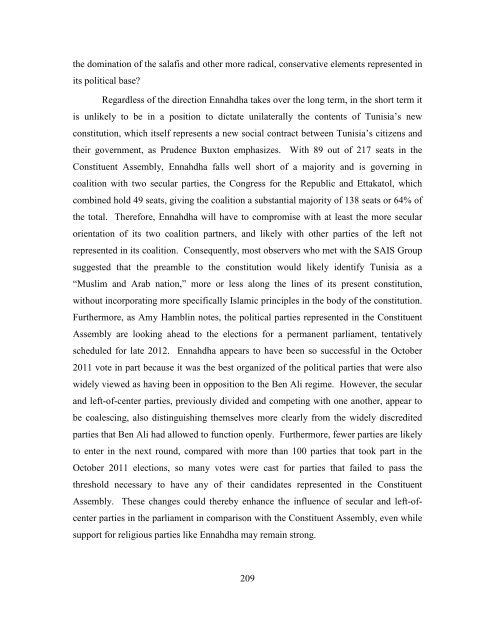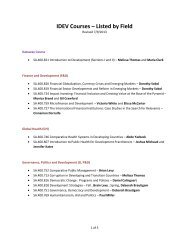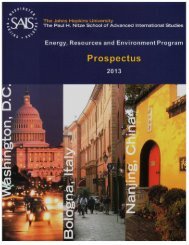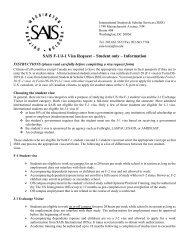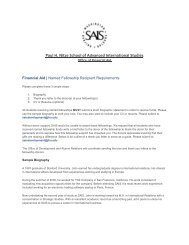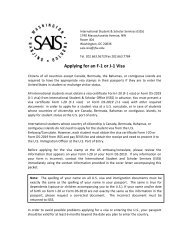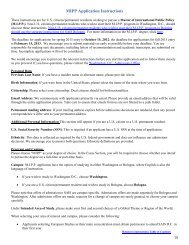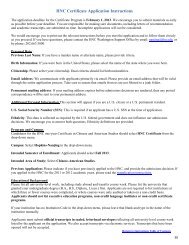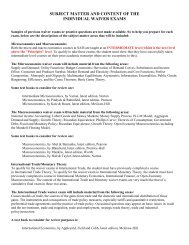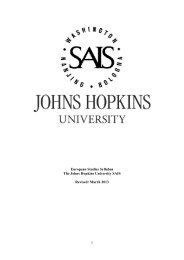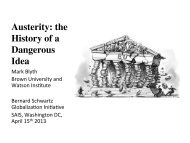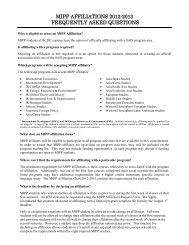Tunisia: Understanding Conflict 2012 - Johns Hopkins School of ...
Tunisia: Understanding Conflict 2012 - Johns Hopkins School of ...
Tunisia: Understanding Conflict 2012 - Johns Hopkins School of ...
Create successful ePaper yourself
Turn your PDF publications into a flip-book with our unique Google optimized e-Paper software.
the domination <strong>of</strong> the salafis and other more radical, conservative elements represented in<br />
its political base?<br />
Regardless <strong>of</strong> the direction Ennahdha takes over the long term, in the short term it<br />
is unlikely to be in a position to dictate unilaterally the contents <strong>of</strong> <strong>Tunisia</strong>’s new<br />
constitution, which itself represents a new social contract between <strong>Tunisia</strong>’s citizens and<br />
their government, as Prudence Buxton emphasizes. With 89 out <strong>of</strong> 217 seats in the<br />
Constituent Assembly, Ennahdha falls well short <strong>of</strong> a majority and is governing in<br />
coalition with two secular parties, the Congress for the Republic and Ettakatol, which<br />
combined hold 49 seats, giving the coalition a substantial majority <strong>of</strong> 138 seats or 64% <strong>of</strong><br />
the total. Therefore, Ennahdha will have to compromise with at least the more secular<br />
orientation <strong>of</strong> its two coalition partners, and likely with other parties <strong>of</strong> the left not<br />
represented in its coalition. Consequently, most observers who met with the SAIS Group<br />
suggested that the preamble to the constitution would likely identify <strong>Tunisia</strong> as a<br />
“Muslim and Arab nation,” more or less along the lines <strong>of</strong> its present constitution,<br />
without incorporating more specifically Islamic principles in the body <strong>of</strong> the constitution.<br />
Furthermore, as Amy Hamblin notes, the political parties represented in the Constituent<br />
Assembly are looking ahead to the elections for a permanent parliament, tentatively<br />
scheduled for late <strong>2012</strong>. Ennahdha appears to have been so successful in the October<br />
2011 vote in part because it was the best organized <strong>of</strong> the political parties that were also<br />
widely viewed as having been in opposition to the Ben Ali regime. However, the secular<br />
and left-<strong>of</strong>-center parties, previously divided and competing with one another, appear to<br />
be coalescing, also distinguishing themselves more clearly from the widely discredited<br />
parties that Ben Ali had allowed to function openly. Furthermore, fewer parties are likely<br />
to enter in the next round, compared with more than 100 parties that took part in the<br />
October 2011 elections, so many votes were cast for parties that failed to pass the<br />
threshold necessary to have any <strong>of</strong> their candidates represented in the Constituent<br />
Assembly. These changes could thereby enhance the influence <strong>of</strong> secular and left-<strong>of</strong>center<br />
parties in the parliament in comparison with the Constituent Assembly, even while<br />
support for religious parties like Ennahdha may remain strong.<br />
209


